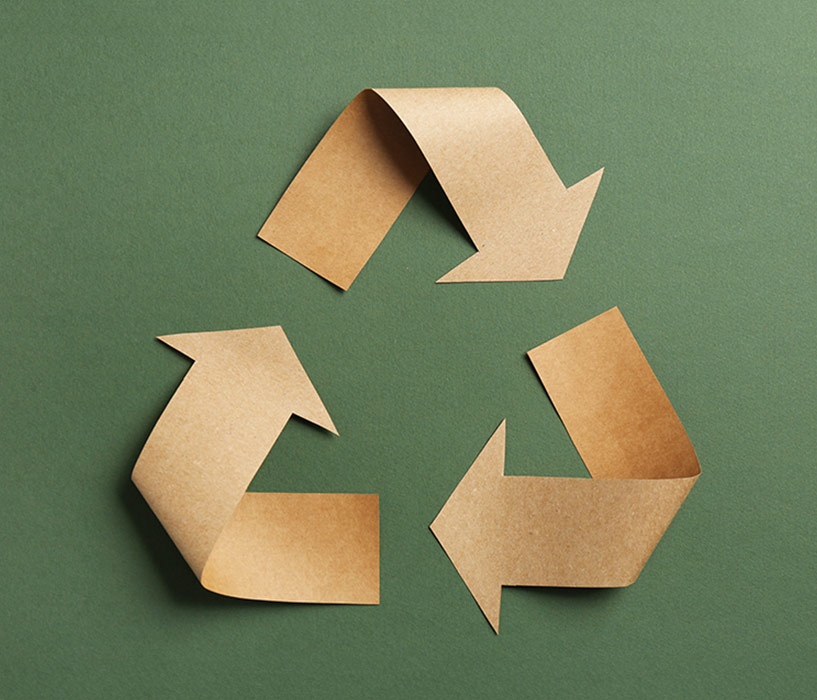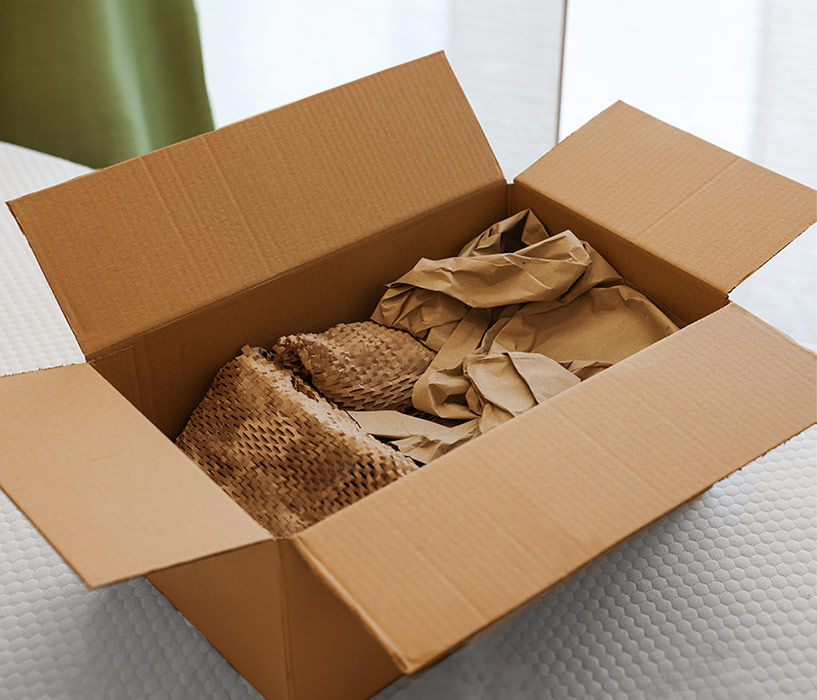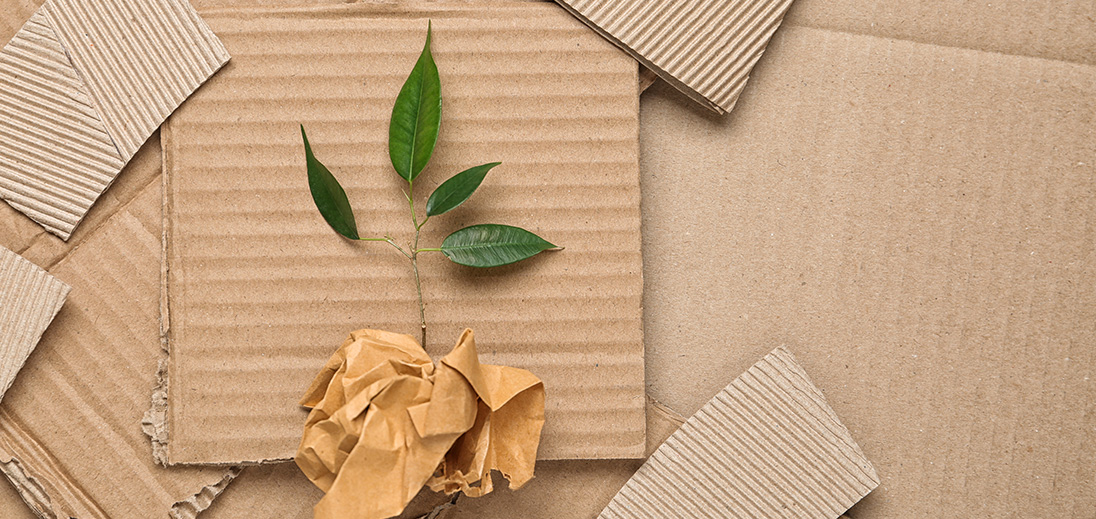Is your Company eco-compliant? Check how to use sustainable packaging!
A green approach to logistics, so-called “green logistics”, is a concept consisting of many aspects - from reducing electricity and water consumption to reducing emissions of various types of pollution. One of the most important aspects is undoubtedly also minimising the amount of waste created, which is detrimental to the environment[1]. What exactly does this mean and what are the alternatives to standard solutions? Explore our best practices - use sustainable, yet still attractive and functional packaging for your business!
A green approach to logistics, so-called “green logistics”, is a concept consisting of many aspects - from reducing electricity and water consumption to reducing emissions of various types of pollution. One of the most important aspects is undoubtedly also minimising the amount of waste created, which is detrimental to the environment[1]. What exactly does this mean and what are the alternatives to standard solutions? Explore our best practices - use sustainable, yet still attractive and functional packaging for your business!
Sustainable packaging = responsible business
 The state of the planet is alarming and global warming means that we are increasingly faced with heatwaves, huge frosts, gales or dramatic storms. The whole situation is also exacerbated by inappropriate choice and use of packaging, which is all the more important given that waste generation is forecast to increase by up to 70 per cent by 2050 (data from an OECD report)[1]!
The state of the planet is alarming and global warming means that we are increasingly faced with heatwaves, huge frosts, gales or dramatic storms. The whole situation is also exacerbated by inappropriate choice and use of packaging, which is all the more important given that waste generation is forecast to increase by up to 70 per cent by 2050 (data from an OECD report)[1]!
To protect the environment, not only numerous grassroots movements are emerging, but also specific legal solutions, including EU directives. These introduce obligations for packaging waste to be recycled - by 2030, most of it will have to be recyclable.
On the one hand, this places additional obligations on businesses and, in a sense, shifts some of the burden for combating pollution onto them. They become responsible for the entire life cycle of their product, which also includes packaging waste[3]. On the other hand, it is worth looking at it a little differently - as an opportunity! This is because it allows you to demonstrate that your business is aware of the need for this type of change and wants to help in the fight to keep the planet in the best possible condition. The first step is therefore to choose packaging that is as compatible as possible with the circular economy. What exactly does this mean?
“Green” solutions in packaging - what to choose?
The ecological challenges facing entrepreneurs present a broad range. To organise them and be able to quickly communicate the characteristics of selected packaging, we have created a special tool – Green Card.
The Green Card is a tool that provides comprehensive environmental information on specific products. It clearly and transparently presents properties from the 4 main areas of eco-challenges faced by modern business. Indeed, in 2021, we carried out a survey on a group of several hundred of our customers, which helped us to distinguish these areas – these are:
- Pollution prevention – referring to whether a product is recyclable;
- Sustainable use of resources – referring to the composition of a given product, e.g., by indicating what percentage of it is made of natural raw materials;
- Climate change – primarily indicating possible greenhouse gas emissions;
- Biodiversity conservation – referring to specific resource certification.
Furthermore, we can also find information such as indicating the place of origin of a given product or other environmental aspects, thus gaining a holistic view of our proposed models. As a result, all customers have easy access to key information about the eco-friendly properties of our products. Especially as the sustainable approach applies to every element of the packaging: from the boxes themselves, to the void fillers, to the packing tapes - yes, in every category you will find solutions created with nature in mind with us!
Boxes and pallets
 Corrugated cardboard boxes are probably the most popular packaging solution - and this is great news! They are fully recyclable, although initially it is undoubtedly worth using them at least several times (they are reusable). At the same time, they provide good security and protection for products during transport, even if the parcels are bulky or have non-standard shapes. They are also aesthetically pleasing and have great potential for personalisation, such as creating a specific imprint.
Corrugated cardboard boxes are probably the most popular packaging solution - and this is great news! They are fully recyclable, although initially it is undoubtedly worth using them at least several times (they are reusable). At the same time, they provide good security and protection for products during transport, even if the parcels are bulky or have non-standard shapes. They are also aesthetically pleasing and have great potential for personalisation, such as creating a specific imprint.
Importantly, at Antalis, we are aware of the different needs of our customers, hence we offer many types of such boxes. One of these is flap boxes, which are sometimes considered a classic in their category. They are available in many sizes, although if you cannot find the right one, we can make them to order.
Another option is shipping boxes with automatic bottom, which also feature an adhesive strip and tape - they fold up in no time. Flat boxes also have a similar adhesive addition, which are great for the e-commerce industry. Yet another interesting option are the telescopic boxes, i.e. models created from two parts: the bottom + an attachable lid. Perfect to pack your gifts!
When it comes totransporting long items, the perfect solution are round tubes and rectangular tubes, the latter of which being more practicable. Why? They make the whole transport process much more efficient - they don't roll around on the surface of the vehicle and they don't take up too much space. They are therefore an excellent logistical cost-saving solution. They are treated like regular cardboard boxes and there is no need to pay extra for sending a non-standard package.
Importantly, paper can also be used for archive boxes. It is a great way of protecting documents and keeping your office space tidy, while complementing your company's eco-image!
Ecological void fillers in packaging
When it comes to creating sustainable shipments, the right void fillers are very important. Of course, the best solution is to choose a box that is perfectly matched to the product to be sent, but - as we all know - this is not always possible. In such cases, paper is also an excellent choice!
We offer both plain sheets and decorative double-layered papers. The first layer is shaped to form a honeycomb structure. The second is made of a special, highly aesthetic tissue paper (available in various colours). Which should you choose? Both of these options are excellent at cushioning and protecting parcels, while they are also lightweight, so they do not affect the weight of the parcel and, consequently, the costs of the logistics processes.
As far as alternatives to paper are concerned, we have Renew Zero air fillers made from recycled and renewable plant waste. Other air mats are also a good option - these types of “cushions” are reusable and also recyclable. The same goes for packing foam, which is great for securing all sorts of round objects - it allows them to be wrapped tightly, creating an excellent filler and protector for the goods.
Paper packing tapes
The last element, but definitely no less important, is the use of appropriate packing tapes. When it comes to recyclability, paper models should undoubtedly be the first choice. They are fully functional, do not damage the surfaces to be glued, can be easily torn off manually during use and can even be written on with a pencil or pen. Just as importantly, their adhesive contains no toxic substances!
Bringing eco-solutions into your business does not have to be difficult at all. When it comes to sustainable packaging, there are plenty of options to meet the needs of any business as well as individual customers. Still not sure what to choose? Antalis specialists are here to help because a conscious approach to logistics is our specialty!
References:
1. Kołodziejczyk N., Kowalska M., Misztal A. (2022). “Green logistics” as a method of action for sustainable development. W: Frajczak-Kowalska A. (ed.), Problems and challenges of the contemporary logistics (pp. 157-172). Poznań: Rys Publishing 2022.
2. OECD (2018): Global Material Resources Outlook to 2060. Economic Drivers and Environmental. Paris, OECD Publishing.
3. Kończak B., Klus L., Klus M., Białowąs M., Zawartka P. (2023). Innovations in the packaging industry taking into account the principles of a circular economy, In: Kruczka, M. (ed.), Innovative green economy. Part 5 New horizons for eco-innovations (pp. 57-66). Katowice: Main Mining Institute 2023.







